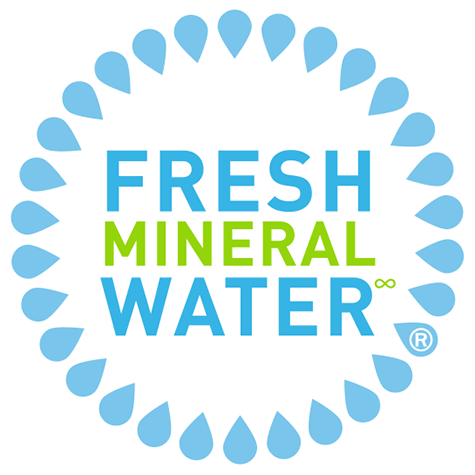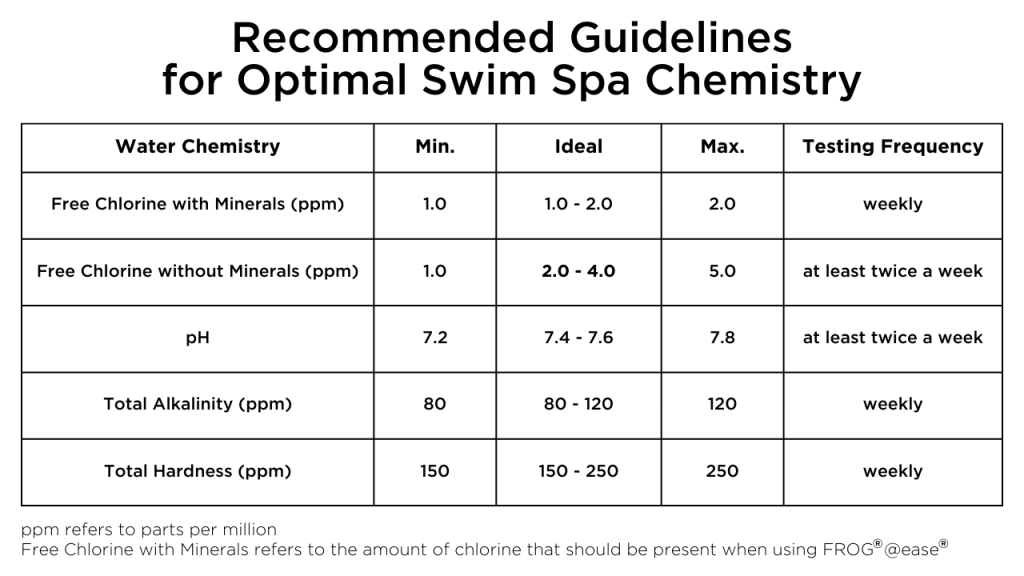Factors that affect your swim spa’s water balance
Many factors affect your swim spa’s water chemistry, some are easier to control than others. Frequent use, many bathers, organic matter, and water temperature can all alter your swim spa’s water chemistry but are typically the least significant factors that affect water balance.
The chemicals and their levels that you constantly adjust – Total Alkalinity, pH, and Total Hardness – have the most significant impact on your swim spa’s water balance.
The importance of balancing your swim spa water
Water balancing is simply the relationship between different chemicals in your swim spa; balanced water is not corrosive nor scaling.
Swim spa water constantly changes, seeking its own level by dissolving and “holding” minerals until it becomes saturated, and cannot hold anymore. Swim spa water that doesn’t have enough minerals dissolved is typically more acidic and aggressive and will attempt to saturate itself by dissolving everything it comes into contact with in order to build up, its mineral content. As a result. the water will begin to corrode and etch away walls, surfaces, and anything metal, including heating elements, pump seals, internal parts on gas fire heaters, underwater light fixtures/jets, etc.
Once swim spa water becomes fully saturated, it will attempt to lose any excess minerals, particles/material in the form of scale, which is then deposited on things the water comes into contact with. Swim spa water that is oversaturated often looks cloudy and murky because of the excess particles floating freely in the water and are at the greatest risk of scaling. If not corrected, scale and carbonates can build up on swim spa filters, in pipes, pumps, etc., decreasing water circulation and ultimately damaging swim spa components.
Water balance describes a swim spa’s ideal water condition. “Balanced” water has just the right level of Total Alkalinity, pH, Total Hardness, and dissolved solids in relationship to its temperature. To calculate if your swim spa water is balanced check out our Langelier Saturation Index (LSI) calculator.
Sanitizing your swim spa
Keeping your swim spa water balanced not only protects your surfaces and equipment from corrosion and scaling, but also allows your swim spa’s sanitizers to work more effectively.
The pH level is one of the biggest factors the influences a sanitizer’s effectiveness. In a swim spa where the pH level is below 7.2, chlorine dissipates much more quickly, which translates into a larger chemical expense and more time spent adding sanitizers to your swim spa.
On the other hand, if the pH level is higher than 7.8, chlorine loses its ability to sanitize the water, forcing you to use more chlorine to achieve the same concentration as a swim spa with a balanced pH level.
For example, if the swim spa water’s pH level is 8.2 chlorine concentration can only reach 15%. This means that if you only had to add one dose of chlorine when the pH is 7.2, at a pH of 8.2 you would need to add six times that amount to achieve the same chlorine concentration.
Constantly balancing and sanitizing your swim spa can seem like a lot of work, especially if you don’t use your swim spa consistently. However, simply keeping your swim spa’s water chemistry balanced and the sanitizer level in check can help your swim spa last even longer and save you the hassle and expense of having to replace swim spa equipment down the road. Plus, keeping the water in balanced and sanitized means it will be ready whenever you are!
If you want to make water chemistry even easier, check out FROG® @ease® Sanitizing System for Swim Spas to sanitize and help maintain pH balance for Cleaner, Clearer and Softer® swim spa water with up to 75*% less chlorine.
*Compared to the minimum ANSI recommended chlorine level of 2.0 ppm for a swim spa


